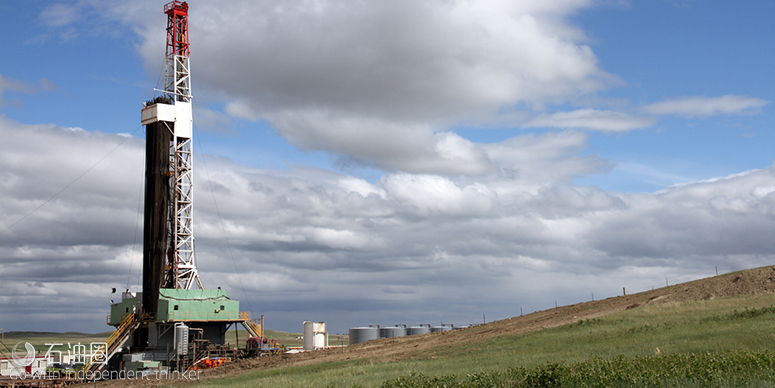In openhole horizontal wells in high-temperature, naturally fractured, deep formations, mechanical segmentation between stages for multistage fracturing operations is high-risk, costly, and sometimes ineffective. Acid fracturing using chemical diversion agents as an alternative to mechanical segmentation has been pilot-tested in some fields with satisfactory results, but the technique has not been studied experimentally or numerically extensively before now. This paper presents a newly designed triaxial fracturing system and describes a series of experiments that verified the validity of tool-free chemical diversion for multistage fracturing of openhole horizontal wells.
Traditional staged fracturing technologies include double-pack single-slip multistage fracturing, packer/sliding-sleeve fracturing, and hydraulic-jetting multistage fracturing. These technologies use tools to achieve segmentation between stages. The tools are neither effective nor reliable under some circumstances such as multicluster fracturing inside a stage; refracturing of horizontal wells; and in deep, high-temperature, vuggy, naturally fractured formations. Diverted fracturing with chemical diversion agents has become an option.
Diversion has been applied in matrix acidizing and, more recently, in fracturing. Diverted fracturing can be used for both far-field and near-wellbore diversion. Far-field diversion shifts the fracture to unstimulated areas to create complex fractures that increase reservoir contact volume. This paper focuses on near-wellbore diversion, which can be accomplished using mechanical and chemical methods.
Recently developed chemical diversion materials include ball sealers, particulates of various sizes, and fiber. These diverters need to be degradable or dissolvable in formation fluids over time. Particulate diverters are available in sizes ranging from several millimeters to a micrometer, allowing them to plug orifices of various sizes and to bridge perforations, fractures, and vugs. Degradable fiber is another commonly used diverter. It can bridge the fracture or fill the gap between particulate diverters to form a tight barrier. Combinations of particulate diverter and fiber have been used often.
Diverted fracturing has been used in horizontal wells for refracturing, fracturing multiple clusters in one stage, and even for segmentation in openhole horizontal wells. Refracturing targets regions that have adequate reserves for recovery but are underdeveloped because of nonuniform cluster stimulation. Chemical diversion can restimulate these reservoirs.
Diverted fracturing also applies to new well completions. Generally, a well will be perforated with multiple clusters in one stage to reduce trips, the number of stages, and cost. Heterogeneities, perforation, and allocation of flux make it difficult to ensure cracking and propagating fractures of all clusters. Diverters are used to plug the initial fractures. Continuous injection of the fluid will initiate and propagate the fractures of the remaining clusters. In an application in the Bakken shale, diversion and cluster coverage were evaluated using spectral gamma ray logging. Two types of tracers were used, one added to the fluid before the diversion and one after the diversion. The evaluation showed coverage of up to 92% using diversion technology. In a new well completion in the Eagle Ford shale, results of radioactive-tracer logging and microseismic monitoring identified new stimulated areas after diversion, verifying the validity of diversion fracturing.
Currently, diverted fracturing has been studied from the perspectives of theoretical analysis, experiments, and field testing and has focused primarily on diverter degradation, jamming flooding for diversion strength, and diverter-size optimization. Significant work was performed on triaxial fracturing experiments or staged fracturing in horizontal wells. However, little experimental work was performed on fracture geometry in diversion fracturing and staged fracturing in openhole horizontal wells using large triaxial fracturing systems with diverters.
Verification Process
The authors followed a three-phase process to investigate tool-free multistage fracturing experimentally in openhole horizontal wells with diversion agents. First, they designed a multistage triaxial fracturing system and experimental procedures to satisfy the requirements of diverted fracturing in horizontal wells. Then, they conducted a series of experiments to investigate the feasibility of multistage fracturing with diversion agents using natural carbonate outcrop cubic blocks, and used computerized-tomography scanning to obtain detailed fracture geometry after each experiment. Finally, they analyzed the effect of diversion-agent type, concentration, and injection procedure on diversion.
Concentration of diversion agents tested ranged from 0.4–1.6 wt%. Injection procedure for two-stage fracturing was fracturing fluid, followed by diversion fluid, and then fracturing fluid.
The results of the experiments show creation of multistage fractures perpendicular to the openhole horizontal wells, verifying the validity of the tool-free multistage fracturing of openhole horizontal wells with diversion agents. Lessons learned included the following:
- Proper agents or combinations can effectively plug a previously generated fracture and generate sufficient pressure to initiate another fracture.
- The breaking pressure, or propagation pressure, of the second fracture was higher than that of the first fracture. Under experimental conditions, 1- to 3-mm fiber, or a combination of fiber and particle (0.8–1.2 mm), can effectively plug fractures and enable segmentation.
- The amount of diverter and openhole length are vital factors for the success of experiments.
The paper presents a detailed discussion of the results; its Table 1 provides detailed schemes and conditions for nine experiments. Among key findings was that, in field treatments, diverters not only can plug previously created fractures effectively but also can raise treatment pressure to open microfractures or bedding. This enhances fracture complexity, which is beneficial in tight formations.
Conclusions
- Multistage fracturing with chemical diverters is feasible in openhole horizontal wells.
- Fiber, or a combination of fiber and particulate, can plug a previously created fracture effectively and build sufficient pressure to initiate another fracture.
- The experiment described in the paper is repeatable. Under proper experiment schemes, multistage fractures perpendicular to the wellbore repeat.
- The main fractures are perpendicular to the wellbore. Some secondary fractures are opened as a result of fissures or bedding of natural outcrops. The fractures are complex to some extent.
- Key factors to ensuring the success of the experiments described in the paper are openhole sections with sufficient length, the proper amount of diverter, and the proper pump schedule.

 石油圈
石油圈
